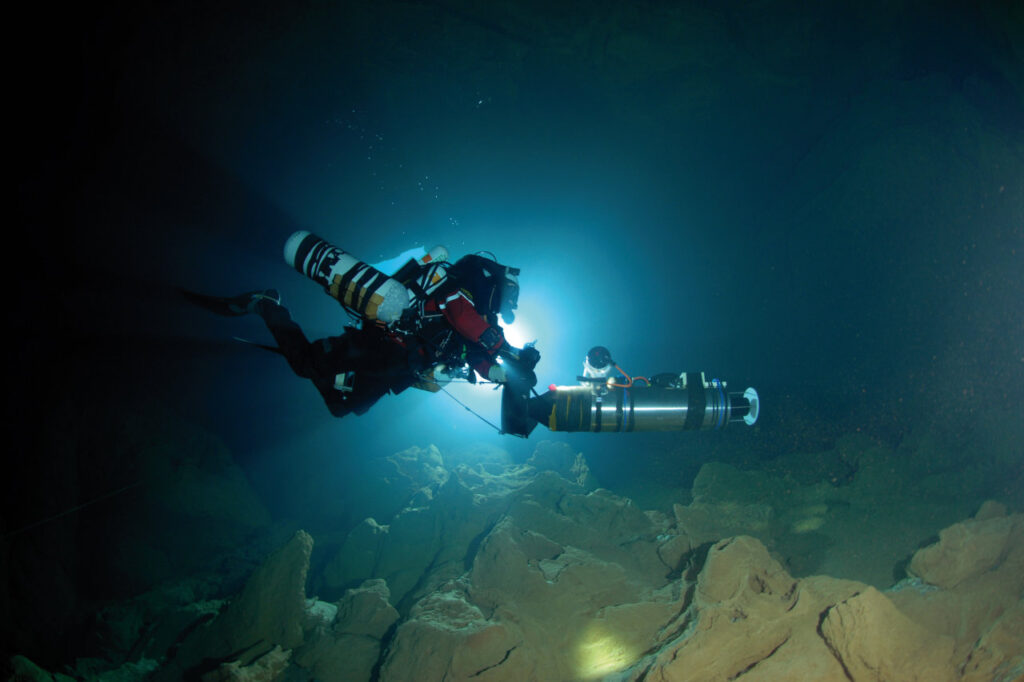[LUM#5] In search of blue gold
It gives us pure water straight from the tap. It protects us from floods. Welcome to karst, the subterranean Gruyère that holds precious reserves of groundwater, especially in our region.

A veritable treasure trove lies beneath our feet. Kilometers of galleries and caves carved out of the limestone weave a complex, little-known network harboring a priceless resource: blue gold in abundance.
How deep do these galleries wind? How much water is stored in the cavities? These are crucial questions for hydrogeologists exploring karst. " The geometry of these structures enables us to assess the volume of water available, and their morphology can provide information about the flow dynamics within karst networks ," explains Hervé Jourde, researcher at the Hydrosciences Montpellier laboratory. " Valuable information: we're talking about the water resources on which local populations depend ", explains the specialist.
In the depths of the Earth
In France, more than 65% of the groundwater used to supply drinking water comes from karst. This is the case in Montpellier, where the water that supplies the city is pumped directly from karstic conduits at the source of the Lez river. " It's very high-quality water right on the city's doorstep, covering 80% of the local population's needs," explains Hervé Jourde. Will the resource be sufficient to supply the city's growing population? Can it cope with the region's summer peaks? " To find out, we need to explore this network at great depth in order to estimate the volumes available", answers the researcher ( Multi-scale evaluation of the hydrodynamic properties of a karst aquifer (Lez, France), in Recherches hydrogéologiques et environnementales dans les systèmes karstiques, 2014).
These are veritable expeditions into the bowels of the Earth, led by cave divers who immerse themselves in absolute darkness to map the karst. " Beyond 200 meters, the divers can no longer continue, so we can use robots designed for these explorations", explains the hydrogeologist, who is collaborating with researchers from the Montpellier Laboratory of Computer Science, Robotics and Microelectronics(Lirmm) and the PlongéeSout diver association, through the Aleyin project.
Limiting the severity of floods
These explorations are all the more important as karst also plays a major role in flooding. When water levels in the karst are low, precipitation is first stored in the fractures and conduits, limiting the risk of flooding downstream," explains Hervé Jourde, who describes karst as "a real asset for limiting hydrological risk ". A better understanding of the karst network would enable us to refine flood forecasts in the event of heavy rainfall. And even protect us from rising waters. " We could opt for strategic positioning of pumping stations to regulate groundwater levels and limit the severity of floods," explains Hervé Jourde.
UM podcasts are now available on your favorite platforms (Spotify, Deezer, Apple podcasts, Amazon Music...).